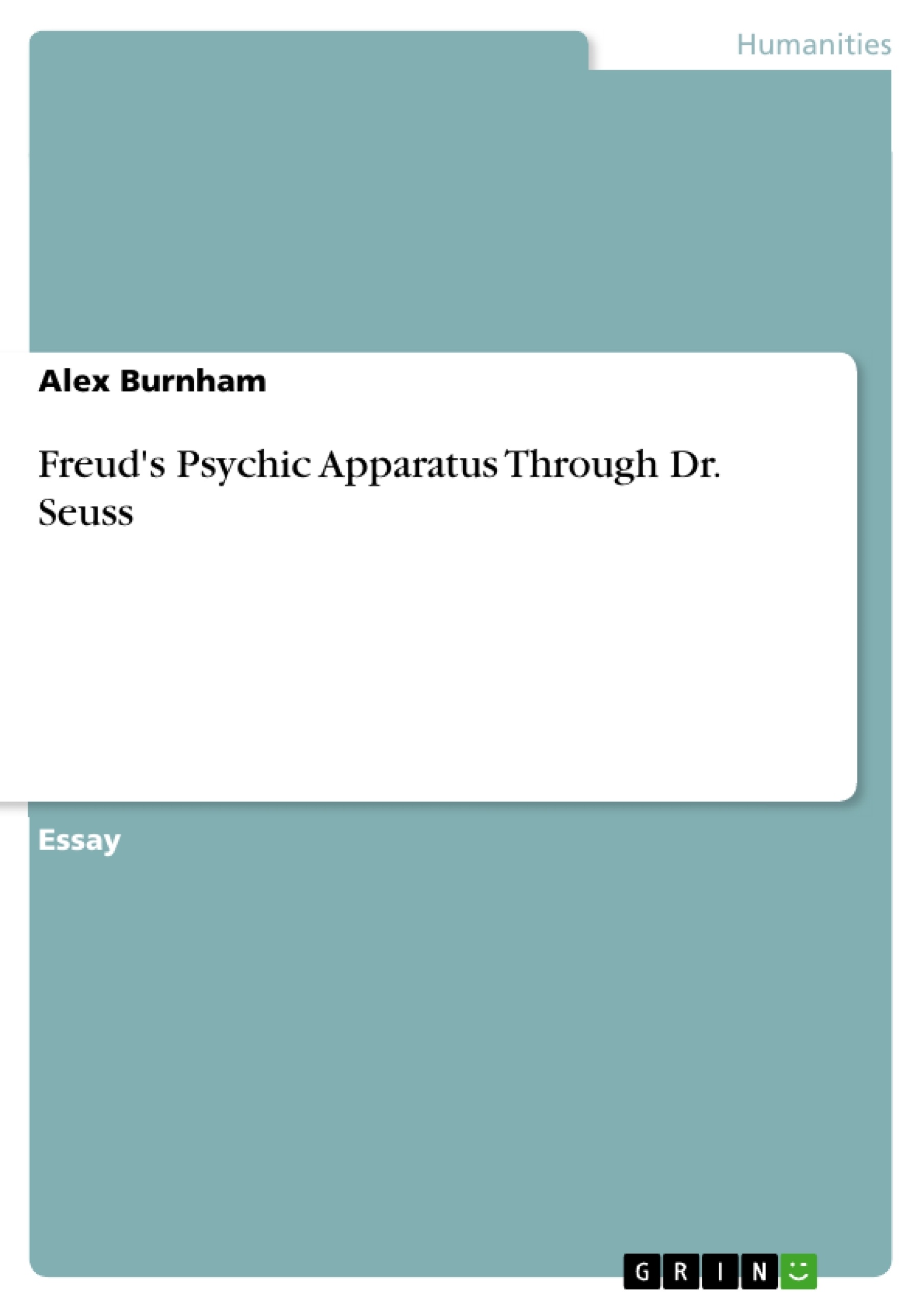This texts overviews the work of Sigmund Freud while comparing Freud's work to The Cat in the Hat, by Dr. Seuss. Seuss's children's book uses characters whose archetypes fit perfectly into Freud's "psychic apparatus" -- his schematic of the human mind. The purpose of comparing the layout of a mind to characters in a book is to help foster understanding more easily. With realistic examples, readers can comprehend psychoanalysis and not become bogged down with mundane psychology.
Inhaltsverzeichnis (Table of Contents)
- Freud's Psychic Apparatus Explained Through Dr. Seuss
- The Id: The Cat in the Hat
- The Ego: The Children's Decision
- The Superego: The Fish's Role
Zielsetzung und Themenschwerpunkte (Objectives and Key Themes)
This essay aims to explain Sigmund Freud's theory of the Psychic Apparatus, using the children's book "The Cat in the Hat" by Dr. Seuss as a framework for understanding the different parts of the mind.
- Freud's Psychic Apparatus
- The Id, Ego, and Superego
- The Role of Desire and Reality in Human Behavior
- The Development of the Psychic Apparatus Throughout Life
- The Influence of Dr. Seuss on Understanding Freud's Theories
Zusammenfassung der Kapitel (Chapter Summaries)
Freud's Psychic Apparatus Explained Through Dr. Seuss
This chapter introduces Sigmund Freud's theory of the Psychic Apparatus, a blueprint for the human mind that dictates activity and interaction. It examines the three main components of this apparatus: the Id, Ego, and Superego, and how they interact and influence human behavior.
The Id: The Cat in the Hat
This chapter explores the Id, the most basic part of the human psyche, driven by instinct and desire. It uses the character of the Cat in the Hat from Dr. Seuss's book to illustrate the Id's characteristics, particularly its focus on pleasure and disregard for consequences.
The Ego: The Children's Decision
This chapter focuses on the Ego, a mediator between the Id and reality. It examines the Ego's role in balancing the desires of the Id with the demands of the real world, using the children in "The Cat in the Hat" as examples of how the Ego makes decisions based on both pleasure and consequence.
Schlüsselwörter (Keywords)
The primary focus of this essay is on Sigmund Freud's theory of the Psychic Apparatus, specifically the Id, Ego, and Superego. It explores the interplay of desire, reality, and conscience in shaping human behavior, using Dr. Seuss's "The Cat in the Hat" as a relatable and engaging framework for understanding these complex psychological concepts.
- Arbeit zitieren
- Alex Burnham (Autor:in), 2011, Freud's Psychic Apparatus Through Dr. Seuss, München, GRIN Verlag, https://www.grin.com/document/177645



